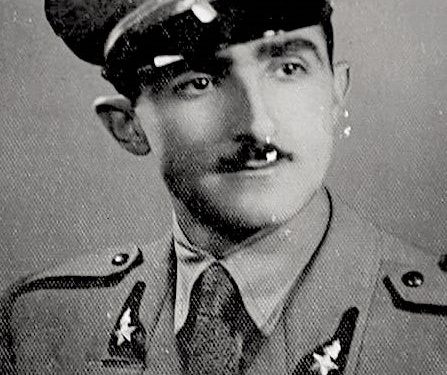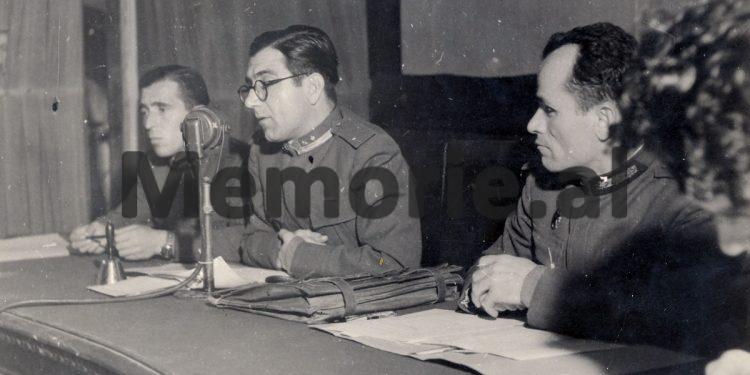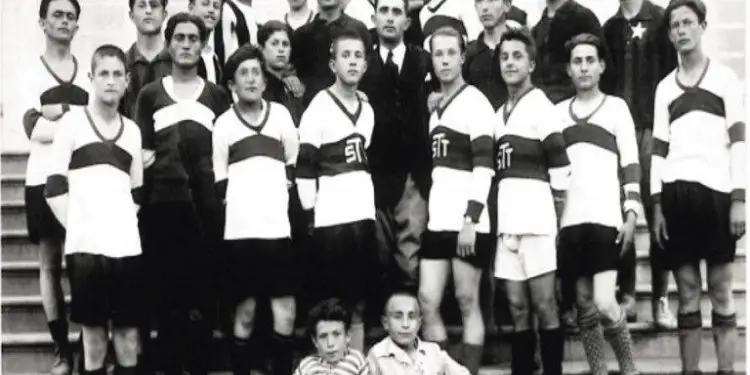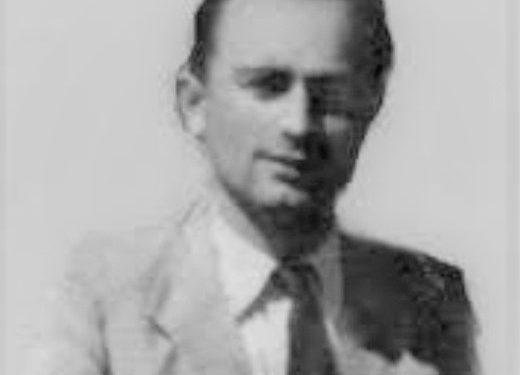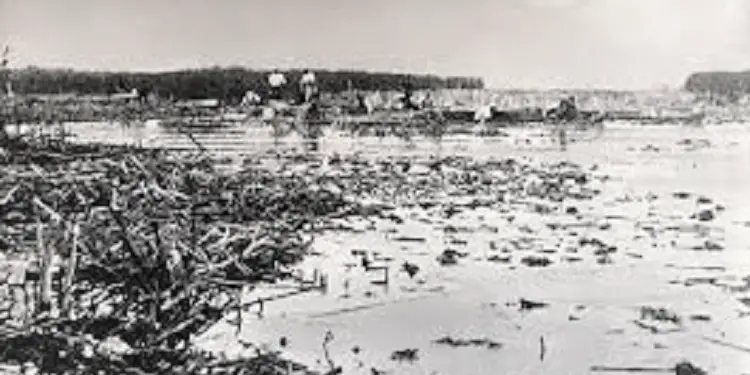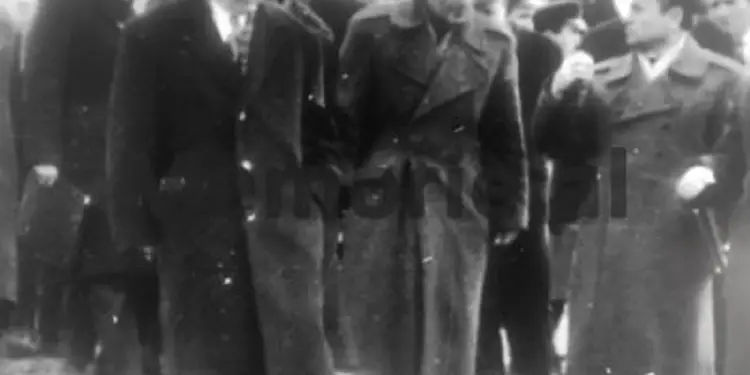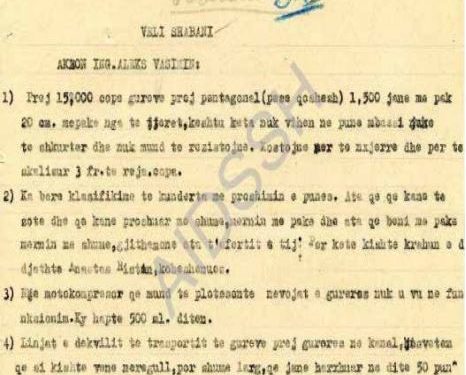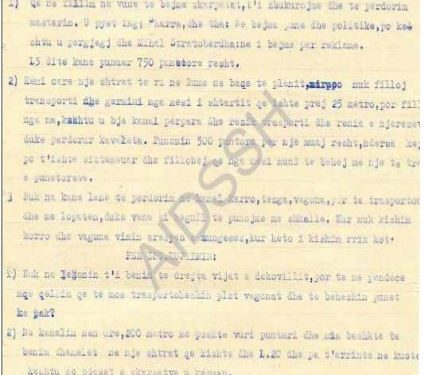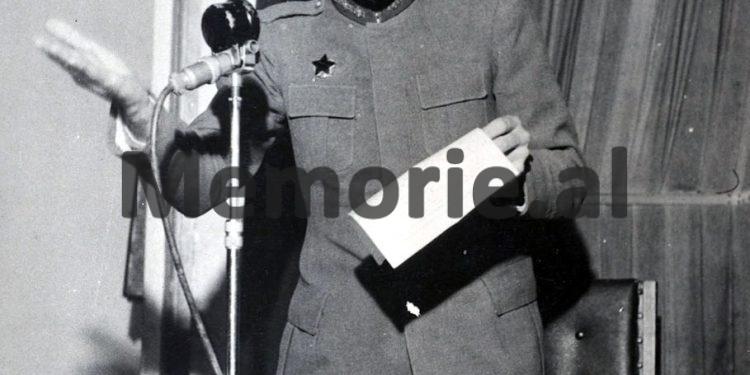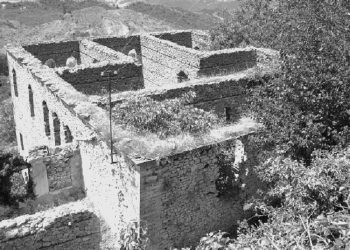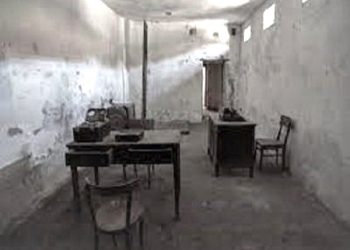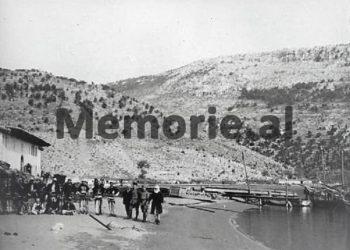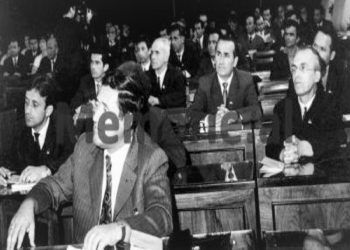By Dr. Mirela Sinani
The second part
– What was the so-called “sabotage organization” in the drying up of the Maliqi swamp? –
Memorie.al/ Who were the persons who were accused as members of it? What cultural and professional background did they have? Was there really such an organization or was it a scenario that served the regime of the time to achieve certain goals? These are some of the questions with which, today, anyone who seeks even a little bit of the truth of this event, turns his eyes to the past and tries to find answers. Complete answers are often difficult to find in the documents, as the documents are incomplete or even forged. They can be formulated only after a full knowledge of all documented and carefully analyzed facts.
Continues from the previous issue
The second group of “saboteurs” of the draining of the Maliqi swamp
The punishment of the engineers of the Maliqi swamp and the mounted judicial process The establishment of the totalitarian system in Albania has its beginnings since before the end of the Second World War, when during the war that took place between different political wings, the first foundations were laid towards a communist dictatorship.
The process of installing the dictatorship would be a bloody process, where individuals and groups that presented a danger to the regime would be persecuted, punished and executed: those who were considered potential enemies. For this, a state structure headed by the Communist Party and with institutions completely controlled by this leading organization was built.
The State Security and military courts were considered the iron fist of the totalitarian system against the “enemies of the regime”, through which many innocent people were convicted and executed. Mostly individuals educated abroad, intellectuals and technicians participated here. The regime retaliated against clerics, deputies who demanded a democratic and free country, citizens who criticized the regime’s policies, as well as intellectuals labeled as foreign agents or saboteurs.
Although many times powerless against the actions and methods used by the totalitarian regime, to stop and suppress any possibility of rebellion against it, since the first years after the Second World War, there were not a few organized resistances against the communist regime. Malësia e Madhe and Postriba are two of the symbols of this resistance, which tragically ended with the shooting of most of the participants in them and a wave of arrests and deportations, not only of the families of the resistance participants, but also of their relatives.
The main model for these oppressive measures, aimed at establishing absolute control over the Albanian people, the disappearance of any space of individual and collective freedom, served the communist practices against the class enemy, implemented especially in the Soviet Union, but also the reprisals carried out in Yugoslavia, against the hostile elements, who supposedly did not accept the union-fraternity of the peoples, which in fact was the submission of every ethnic group or nation to the nation or more powerful nations.
Often these methods of striking against people suspected of being enemies, or potential danger, were applied with even greater zeal than in the Soviet Union itself. They only resembled the hatred with which Albanian patriots were persecuted and annihilated in Yugoslavia. While in the Soviet Union and in many communist countries in Eastern Europe, some of the opponents of the regime were taken outside the borders, being expelled or just excluded from public activity, in Albania, they were physically annihilated, just as it happened in Marshal Tito’s Yugoslavia.
The special organs of the state created incidents and traps in order to fabricate pretexts for mass arrests, shootings and deportations. Seen from this point of view, the repressive measures that were taken in Albania were many times more severe than in other countries of the Communist East. The ratio worsens even more, if we take into account the small number of the population, immediately after the Second World War or the small area of the territory where these strikes took place.
The incident with the engineers, technicians and other employees of the enterprise for draining the Maliq swamp, the arrest of those who, at that time, were among the most talented and educated people in post-war Albanian society, graduates of the most prestigious universities goods of the time and the judicial process mounted against them, is a typical case of communist action, subordinated to the Titista clique, which was deeply anti-Albanian.
The trial, which began on 8.11.1946, was used by the regime to accuse the intellectuals of being collaborators of foreign services, as well as the respective states of meddling in Albania’s internal affairs. The communist regime sought to eliminate any obligation it had before the democratic world, for transparency in political matters. With these acts, the communist regime was severing the country’s ties with Western democracies and isolating the country.
Western democracies were interested in a democratic and peaceful state in Albania. They had the opportunity to monitor and shed light on the progress of democratic processes and political freedoms. Also, they had instruments to force the communist regime to implement the commitments it had for the construction of a democratic state. Therefore, the communist regime accelerated the severing of ties with Western democracies, plunging the country into the darkness of lack of information and open anti-democratic actions.
More than a trial against the opponents, this action was a demonstration of Slavic-Communist hatred against the patriotic layers, those educated and capable of mastering the country and building it independently, as well as proving the plans of the regime, for to bring the country under the dependence of Yugoslavia, as its seventh republic, in the framework of supposed union – brotherhood with other Yugoslav peoples.
But the trial against the engineers was also a propaganda tool to justify the failures and difficulties that the communist regime was encountering in the field of economy. These uneducated people, who had taken over the leadership of the country, had no moral fiber to deceive the people, promising economic well-being, and on the other hand, they did not hesitate to invent enemies and saboteurs, where they blamed them for the dire economic situation of country. The people were in a miserable condition.
The closing of the borders and the confiscation of shops, properties or goods of local merchants had blocked the free circulation of goods, the supply of the people with basic food products. The extraordinary tax on war profits was also an impoverishing policy, which stripped the Albanian merchant, but not only him, of every tool and economic reserve. As for the poor peasant, the knife had reached the marrow. The Agrarian Reform, which gave land to the peasants, unloaded the burden of responsibility for the lack of food on the peasantry itself.
With primitive tools and working arms, it was impossible to ensure the cultivation of the land and the necessary amount of production, to ensure a living. Reclamation works, irrigation canals, fertilizers, disinfectants for protection against insects, rodents, chemical preparations, for protection against various infections, good seeds suitable for the local climate, as well as proper assistance with professionals in agriculture and livestock were missing. In the conditions of the lack of agricultural machinery, the land dreamed of for centuries, from salvation, very quickly became a heavy burden for the peasantry.
In this situation of all-round poverty, the trial against the engineers served as a tool to direct and discharge the social tension to the “enemy of the people” and at the same time, served as a psychological terrorizing tool, to intimidate intellectuals everywhere to submit unconditionally. It aimed to spread a sense of fear, showing that anyone who rose up against the regime would suffer the fate of Malik’s swamp engineers. This trial is a model of staged judicial processes by a communist regime.
The inhumane tortures and illegal methods that the investigators used against the engineers clearly emerge from the investigative files, minutes and testimonies taken under far from normal conditions. There it is observed how the accused as enemies are forced to accept the charges fabricated by the state mechanisms of the communist regime, although they were honest people, devoted to their profession and homeland and had nothing to do with the crimes articulated in the court.
The contents of the folder
What stands out from browsing the file is the effort of the State Security to give the event the greatest possible proportions. For this reason, for the group of engineers and other accused employees, the definition was used; “technical-sabotage organization”. Also, in the minutes kept by the Security, the designations: “technical-criminal”, “agent organization”, “technical-sabotage organization”, etc., are often used, which are clearly forms of propaganda.
In order to give this group of engineers and ordinary employees the full appearance and characteristics of a criminal organization, and to make this even more believable to the people, the State Security invented another element that this organization allegedly had. : Its distinguishing symbol that was used to connect with each other. In the file, it is mentioned that the members of the organization put a triangle with a white dot in the middle, a symbol that was used especially for meetings with UNRRA agents and representatives of the missions of Great Britain and the USA.
All the testimony of the defendants, obtained under conditions of pressure and torture, describe that the sabotage of the draining of the swamp was carried out with the purpose of causing great economic damage to the country, for political purposes and for the account of Harry Fultz, who was trying to overthrow the newly established communist regime. In these testimonies, the defendants mention that at the order of Harry Fultz and according to the respective responsibilities they held in the execution of the crime, the sabotage tasks were divided respectively: “Abdyl Sharra, should sabotage all the works in the canal”, presenting this the latter, as an organizer of sabotage.
While, “Aleks Vasili, had to sabotage the quarry and arouse dissatisfaction among the workers; Eugenio Scaturro, would sabotage his work sector, bringing dissatisfaction to the menagerie, or deliberately leaving a tool unfixed, for 2-3 days” (taken from the minutes of testimony of Vasil Manos). Even the testimonies received from Kujtim Beqiri and Zyrika Mano, who in the file is accused of being responsible for carrying out the communication link between the group of engineers in Maliq and Harry Fultz, reaffirm the same facts.
According to the minutes kept, a total of three meetings were held between the engineers and the envoys of the American UNRRA mission, where in exchange for carrying out the sabotage, these envoys offered rewards in sterling and gold coins. Another interesting element in the file is related to the written and signed testimonies of the witnesses, who were employees of Maliq, who accuse the group of engineers of sabotaging the work.
Duration: The defendants’ trials began on November 8, 1946 and ended 10 days later.
The defendants mention that by the order of Harry Fultz and according to the respective responsibilities they held in carrying out the act, the sabotaging tasks were divided respectively: “Abdyl Sharra had to sabotage all the works in the canal”, presenting him as the organizer of the sabotages.
Act – charges
The indictment filed by the prosecutor reads as follows: “The technical-saboteur group has committed (since the summer of 1945):
- Acts of sabotage in a broad and systematic manner.
- Espionage on behalf of foreign agents.
They have formed a technical-professional group, to sabotage the reconstruction, the economic power of the country and, as a consequence, to overturn the stabilized situation in our country, in relation to the Greek monarcho-fascists and the external reaction.
On November 8, 1946, the Prosecutor’s Office of the Supreme Military Court sent for trial:
- Vasil Mano (Engineer)
- Kujtim Beqiri (Engineer)
- Mario Guarnieri (Geometer)
- Scaturo Eugenio (Accountant)
- Abdul Sharra (Engineer)
- Pandeli Zografi (Geometer)
- Zurich Mano
- Jan Vasili
- Anastas Risto
- Mihal Stratobërdha (Geometer)
In the indictment it was stated that: “All the defendants above, who had various responsibilities for the drying up of Maliq and who had connections with external elements, are accused of having committed serious sabotage, causing damage to the state big”.
Also, it is specified that; “to carry out these sabotages, the defendants have held secret meetings, who have reported to foreigners about the works and who have followed their orders to carry out the sabotages.”Today’s date was set for the trial of the case.”
From the terminology used, it is clear that the place of legal arguments is taken by ideological language.
The prosecution of the Supreme Military Court requested the following punishments:
- Vasil Mano – Death sentence
- Kujtim Beqiri (Engineer) – Death sentence, hanging on a rope.
- Mario Guarnieri (Geometer) – Life imprisonment.
- Eugenio Scaturo – Death sentence
- Abdul Shara (Engineer) – Sentenced to death by hanging.
- Pandeli Zografi (Geometer) – Death sentence.
- Zyrika Mano – Death penalty.
- Jani Vasili – 1 year conditional imprisonment (probation)
- Anastas Risto – 5 years imprisonment.
- Mihal Stratobërdha – 15 years imprisonment.
For all those sentenced to 5 years and above, the confiscation of movable and immovable property.
While the Court decided: The guilt of all the defendants, describing them as saboteurs and enemies of the people:
- Vasil Mano – Death sentence.
- Kujtim Beqiri (Engineer)-Death sentence by being executed on the rope.
- Mario Guarnieri (Geometer)-Sentenced to life imprisonment.
- Scaturo Eugenio – Death sentence.
- Abdul Shara (Engineer)-Sentenced to death by hanging.
- Pandeli Zografi (Geometer) – Sentenced to life imprisonment.
- Zyrika Mano – Death penalty.
- Mihal Stratoberdha – 10 years imprisonment, compulsory labor
- Anastas Risto – 2 years imprisonment, compulsory labor
- Jani Vasili – 1 year of conditional imprisonment, provided that he maintains good moral and political behavior.
For all 5 people sentenced to death, their execution was ordered in Maliq. For the first eight convicts, the confiscation of their personal property and the loss of civil and political rights were also ordered.
The communist regime was not satisfied with committing this crime. He exiled their families, forcing them to live in poverty and humiliation labeled as families of enemies of the people. Also, he used the entire propaganda machine of the time, writers and cinematography, to build falsified novels and documentary films, with the theme of attacking the “hostile” activity in the economic field of the “saboteurs” of the Maliqi swamp.
Based on these facts, historians and researchers face the challenge of accurately evaluating the files and reconstructing the historical truth, in the conditions when the investigative files have been the object of the falsifying mechanisms of the dictatorial state.
For this reason, a great role is played by the individual experience of the historian or researcher, in similar cases, and the knowledge of how the forgery mechanisms have worked, but also the ability to discover and evaluate every detail, no matter how small or seemingly insignificant, that may serve to shed light on the degree of falsification of this trial. Memorie.al




